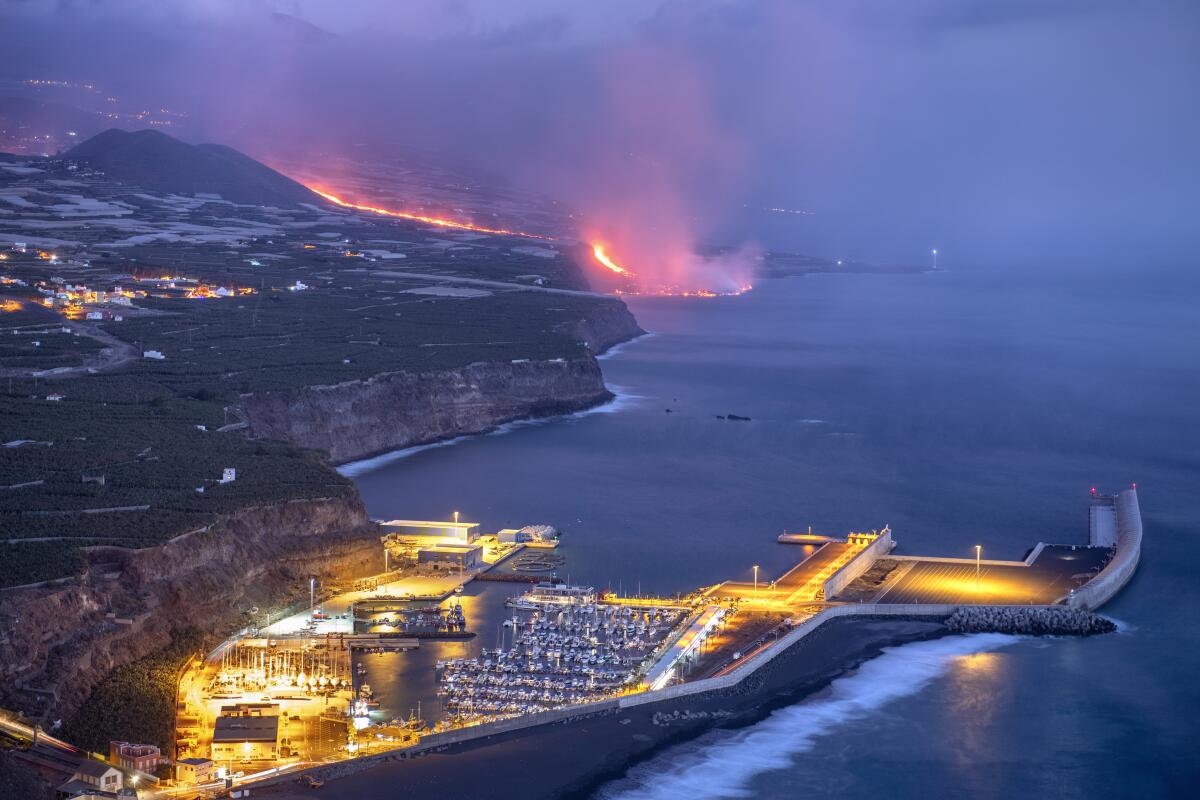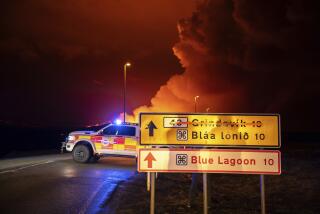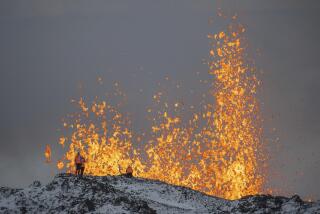As lava from eruption hits the sea, a Spanish island grows bigger

- Share via
LOS LLANOS DE ARIDANE, Canary Islands — The surface of Spain’s La Palma island is continuing to expand as lava from a volcano flows into the Atlantic Ocean and hardens when it comes into contact with the water, scientists said Thursday.
Copernicus, the European Union’s Earth observation program, said Thursday that its satellite imagery showed a D-shaped tongue of molten rock building up on the island’s western shore, measuring 835 acres by the end of Wednesday.
Trade winds typical of Spain’s Canary Islands were helping dispel the plumes of water vapor and toxic gases that result when the lava, with a temperature of more than 1,800 degrees, meets the ocean, where the water is 71.6 degrees.
But authorities were on alert because Spain’s weather forecaster indicated that the wind’s direction could change later Thursday and bring the toxic plumes toward the shore and farther inland.
The hydrochloric acid and tiny particles of volcanic glass released into the air can cause skin, eye and respiratory tract irritation.
The direction the lava flow could take was also a source of concern. Molten fluid emanating from the volcano, which first erupted Sept. 19, was still running downhill and then tumbling over a cliff into the Atlantic. But uneven terrain could make the lava overflow its current path, spread to other areas and destroy more houses and farmland.
A wall of lava up to 40 feet high is bearing down on a Spanish island village after a volcanic eruption.
At least 855 buildings and about 19 miles of roads, as well as other key infrastructure, have been wiped out so far. Banana plantations that are the source of income for many islanders have also been either destroyed or damaged by volcanic ash.
More than 6,000 residents have been evacuated, and hundreds more were advised to stay home to avoid the possible inhalation of toxic gas. No casualties or injuries have been reported among La Palma residents since the eruption began.
La Palma, home to about 85,000 people, is part of the volcanic Canary Islands, an archipelago off northwest Africa. The island is roughly 22 miles long and 12 miles wide at its broadest point.
More to Read
Sign up for Essential California
The most important California stories and recommendations in your inbox every morning.
You may occasionally receive promotional content from the Los Angeles Times.













